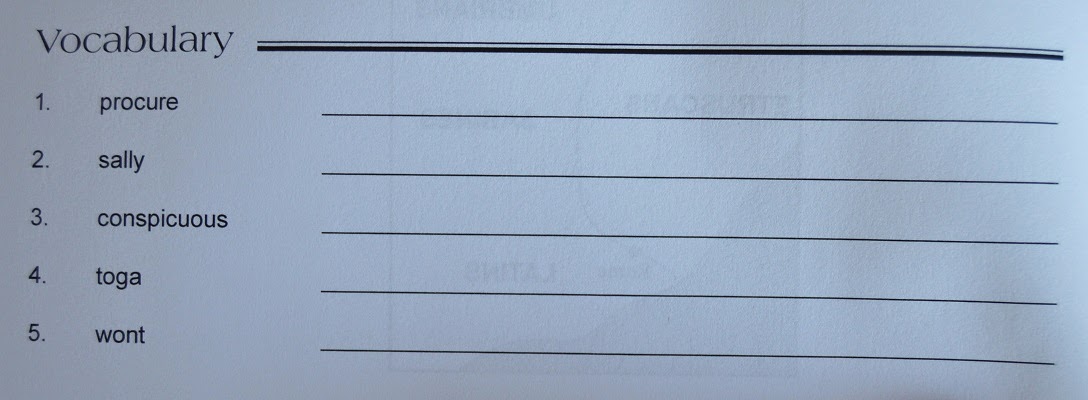First Thoughts
We've had an ongoing, in-depth study of the Ancient Greeks and Romans for most of the year now. So when we had a chance to review The Book of the Ancient Romans Set from Memoria Press, we were excited to get to use the materials. We've been using Memoria Press' Latin programs for three years, so we were interested in seeing what they offer for history.

What's Included in the Set
The set consists of 3 books: The Book of the Ancient Romans, the Student Guide, and the Teacher Guide.
~The Book of the Ancient Romans
The Book of the Ancient Romans was written by Dorothy Mills and has been edited by Memoria Press. It is 435 pages and reads like a living book. It covers early myths and legends of Rome through to when the city fell in 476 AD.
Some of the topics include:
- Early myths and legends
- Founding, civilization, decline, and fall of Rome
- Conquests in Europe, Italy, and the Mediterranean Sea
- Peace, wars, and revolution
- Rules, laws, and character
- Religion
- Rulers: legendary kings, Julius Caesar, Augustus, the Caesars, Trajan, the Antonines, and prominent generals and consuls
- Ancient Roman city, homes, dress, amusements, and education
- Society: early peoples and later ancients: gentlemen, ladies, slaves, and working people
Many pages contain black and white illustrations; like the ones shared in the picture above.
~Student Guide
The Student Guide is broken up into 26 lessons and 5 reviews. Each lesson set is broken up by chapters with pages listed. The review sections cover anywhere from 2-9 lessons. There are 77 pages.
Lessons include some or all of the following:
Facts to Know sections with terms and vocabulary with definitions. This section also includes quotes from key people.
A section to record definitions for vocabulary terms are provided. The number of terms provided vary for each lesson.
There are comprehensions questions over the readings with spaces for short answers.
Activities are included. Some examples are research, writing, chart making, lists, Bible connections, making diagrams, timelines, and maps.
Maps over the lessons are provided where applicable.
The Review component has a section for vocabulary. Children are expected to use a word bank to match up the definitions by writing the proper term on the line that corresponds to the definition.
An Important People, Places, and Things category is set up with a fill in the blank (without terms provided) with a statement for the child to determine what fits.
and drawing pages are provided for some of the Reviews.
~Teacher Guide
The Teacher Guide contains the answers to the Student Guide and Tests with keys that follow the review sections.
The tests have Vocabulary and Identify sections with fill in the blanks for the information provided,
map work,
and a fill in the blank for Who Said That?, and short answer questions.
Our Experience
I enjoy reading Ceesa's writing. Short answer and comprehension questions are where she shines.

We also especially like the mapping activities
and timeline work.
Recommendation
We recommend that you check out the Table of Contents, Text Sample, Student Sample, and Teacher Sample available here. There are also similar resources: The Book of the Ancient World, The Book of the Ancient Greeks, and The Book of the Middle Ages.
Future
The Book of the Ancient Romans is going on our resource shelf. We do a new Plutarch study each term and we will be using the book to help see the time frame of the people while we are learning about their character.
Wishing you homeschool blessings,






















.JPG)
2 comments:
You always write the most helpful reviews. Love the picture of C.
Thanks Phyllis! Ceesa loves that dress. It is from the play she was in at Easter. She is definitely growing up and loves to read.
Post a Comment